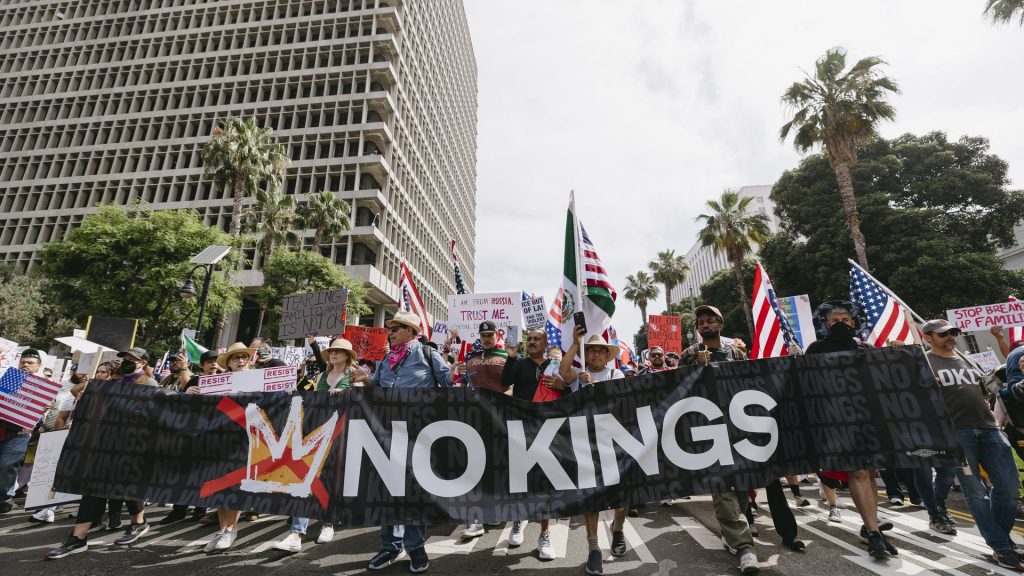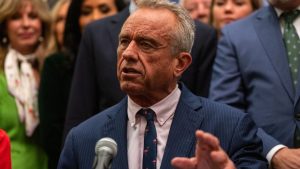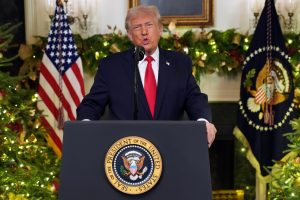The impact of mass protests with ‘No Kings’ scheduled this weekend

Another round of No Kings protests is scheduled for Saturday, Oct. 18. It comes as members of the Trump administration push back on those protests.
How effective are these protests? It depends on the goal.
No Kings protests
The No Kings website says millions of people in cities across the country will be out to protest the Trump administration and President Donald Trump in particular.
“The president thinks his rule is absolute. But in America, we don’t have kings and we won’t back down against chaos, corruption, and cruelty,” their website reads.
More than five million people came out for the first version of the protest in June across every state. According to ACLED, those protests remained “overwhelmingly” peaceful.
Four months later, another big demonstration is planned, and experts SAN spoke with said using the word “demonstration” is prudent.
“The goal is to try to demonstrate how many people there are opposed to the current administration,” Pamela Oliver, sociology professor at the University of Wisconsin-Madison, told Straight Arrow News.
“These are definitely meant to be peaceful, calm protests where the purpose is just to try to show how many people are on your side,” Oliver added.
Trump administration reaction
House Speaker Mike Johnson, R-La., described the planned protests as the “hate America rally,” to bring in “the pro-Hamas wing.”
There is no mention of Hamas on the No Kings website.
“There have been actual pro-Hamas protests in the U.S. and elsewhere,” Susan Olzak, sociology professor at Stanford University, told Straight Arrow News. “The claims of the pro-Hamas movement contain demands that do not overlap with the current claims or demands of the No Kings protests.”
Oliver agreed with that sentiment, calling it a “distraction.”
“They’re so obviously not a pro-Hamas protest,” Oliver said. “There’s so obviously an anti-Trump protest that you could ask the question, why are you bothering to say that? Because you want to get reporters asking people to prove that the protests are not pro-Hamas.”
The No Kings website mentions Trump’s name and alludes to the president and his administration numerous times.
While Johnson called it a “hate America rally,” Oliver believes that’s based more on the message of the protesters rather than on protesting as a form of sharing opinions.
“Clearly, the administration does not think all protests are un-American,” Oliver said. “Because in the past, they’ve supported protests that supported them. So, what they think is un-American is protests opposing them.”
When referring to the Jan. 6 insurrection at the U.S. Capitol, Johnson said, “peaceful protests and people who engage in that should never be punished.”
Change in protesting
Protesting itself in the U.S. dates back to the time when American colonies were under British rule. Olzak said the No Kings protest reminds her of one from more than 250 years ago.
“The original Boston Tea Party protests (taxation without representation) provide a striking parallel,” Olzak said.
That’s because those colonists throwing tea into the water were protesting the policies, or really one specific policy, of King George III.
Olzak said the No Kings protest has a similar feel to these protests aimed at Trump and his policies, specifically immigration.
“The specific message of the No Kings movement, if it can be called a social movement at this point, is relatively unique in its opposition to a specific presidential administration and most of its policies,” Olzak said.
Unbiased. Straight Facts.TM
More than five million people attended the first No Kings rally across the country in June.
Despite those differences, there are still some similarities between these protests and recent U.S. history.
“Many large-scale protest movements, including the Civil Rights movement, the suffragette movement for women’s voting rights, and the anti-Vietnam War movement, used similar tactics that included large-scale marches and demonstrations,” Olzak said.
While there are similarities, the No Kings movement differs somewhat from the Civil Rights movement of the 1960s.
“The Civil Rights movement was grounded in Black communities resisting oppression,” Oliver said. “And so, the protests were happening in lots of different places, different times, led by different people. They often had a local focus, as well as periodic large marches.”
That’s opposed to No Kings, which, so far, has held large demonstrations every few months.
Civil Rights protests and rallies were also very famously, and very visually, opposed by law enforcement. For the most part, No Kings protests and most major protests in the last decade have cooperated with police.
“Police started deciding, ‘oh, we can actually cause less disruption if we cooperate with the protests,’” Oliver said. “So, you get into an era in which protesters mostly do not want to be arrested and do not want to be hit over the head.”
An obvious difference in current protests is the impact of social media. Martin Luther King, Jr. knew how to secure media coverage for rallies and marches, ensuring they were on time for the 6 p.m. or 11 p.m. news, as that was the only way people could see them.
With the modern media landscape aggressively fragmented and social media’s dominance, larger and more visible protests are more common.
“The most obvious change has been the influence of social media on movement activity, both in terms of recruiting support and by coordinating and commenting on protest activity,” Olzak said.
Protest effectiveness
The Civil Rights movement ended with Black Americans having more rights amid the passing of legislation like the Civil Rights Act of 1964.
Can something like the No Kings protests have a real impact?
“You’re demonstrating people care enough about the issue that they’re willing to go to the trouble of wasting a couple of hours of their time to be at the protest,” Oliver said. “That’s what they’re demonstrating.”
With Trump less than a year into his second term, Olzak said we could see these kinds of protests continue over the next few years.
“If this movement can convey a specific political focus, gain the support of large numbers of youth, and elect new and forceful leaders, then it could achieve some success,” Olzak said. “Whether or not these protests can be transformed into a full-fledged social movement is an open question.”
The post The impact of mass protests with ‘No Kings’ scheduled this weekend appeared first on Straight Arrow News.





